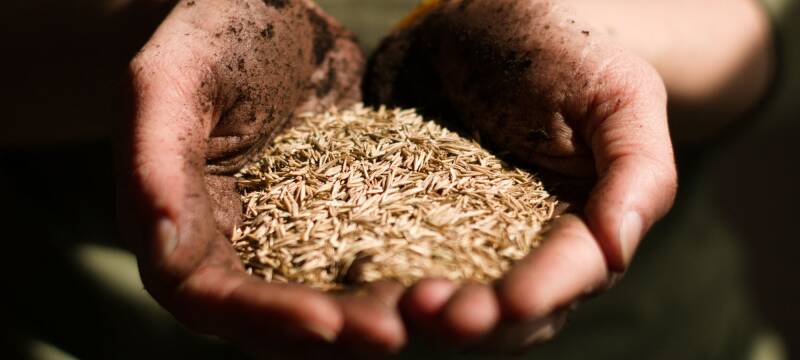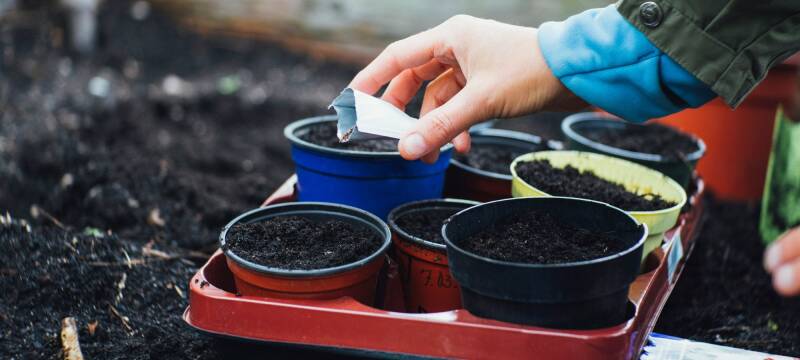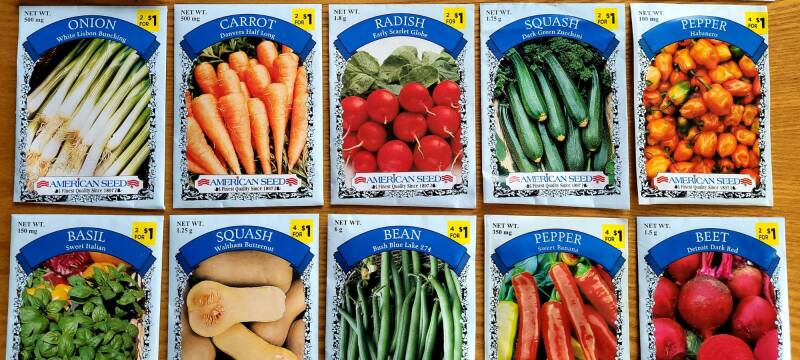
Planting more than just a garden—you're planting possibility.
There’s something magic about holding a tiny seed in your hand. That little speck? It has everything it needs to become food, medicine, or beauty. If you’re just getting started, though, the world of seeds for gardening can feel… overwhelming.
Heirloom or hybrid? Direct sow or start indoors? What’s the difference between open-pollinated and organic?
Take a deep breath. You don’t need to know everything to get growing. But a little seed savvy goes a long way.
Let’s walk through what you really need to know to start strong—whether you’re growing tomatoes, sunflowers, or your very first salad greens.

Types of Seeds
Not all seeds are created equal.
Understanding seed types is a game-changer. It’s where beginner gardeners often get tripped up. But don’t worry—we’re keeping it simple.
Open-Pollinated Seeds
These seeds are pollinated naturally by insects, birds, wind, or humans. The key here is that they “grow true”—meaning the plants grown from saved seed will resemble the parent plant, as long as they’re not cross-pollinated by another variety.
- Great for seed-saving
- More genetic diversity = better resilience over time
- Examples: heirloom tomatoes, basil, lettuce
Heirloom Seeds
Passed down through generations, often over 50 years or more, think of heirloom seeds as vintage seed varieties. They’re open-pollinated, which means they grow true to type (you can save the seeds and replant them).
These seeds often come with a story; maybe a family recipe, a flavor passed down through generations, or a variety tied to a specific region. Heirloom varieties often bring richer flavor and funky colors.
- Often more flavorful, colorful, or unique (like purple carrots or stripey tomatoes)
- Great for preserving biodiversity and culture
- Ideal if you want to harvest your own seeds
Hybrid (F1) Seeds
Hybrid doesn’t mean GMO, meaning they are not genetically modified. It just means the plant is a cross between two specific parent varieties, bred for things like disease resistance or high yields. The plants are carefully bred by crossing two specific varieties to get the best traits of both like disease resistance, bigger fruits, or earlier harvests. You can’t reliably save seeds from hybrids, since their offspring won’t match the parent.
- Super productive and uniform
- Not ideal for seed-saving—the next generation won’t be consistent
- Great choice if you want reliability and high yield
Organic vs. Non-Organic
Organic seeds are grown without synthetic fertilizers or pesticides, using certified organic practices. They’re great if you want to grow an all-organic garden, support sustainable agriculture and reduce chemical exposure.
Non-organic seeds can still produce healthy, chemical-free plants, if you grow them organically.
- Organic: certified, often more eco-aligned
- Non-organic: still safe and often more affordable
Pelleted vs. Non-Pelleted
Pelleted seeds are coated in a clay-like material to make them larger and easier to handle—great for tiny seeds like carrots or lettuce. Just keep in mind they may have a slightly shorter shelf life and often need more consistent moisture when germinating.
- Pelleted: easier to sow precisely (especially helpful for small seeds)
- Non-pelleted: natural form, no coating, longer shelf life
GMO vs. Non-GMO
This one gets a lot of questions! GMO (genetically modified organisms) seeds are altered in a lab to express certain traits. These seeds are not available to home gardeners—they’re mainly used in commercial agriculture. So when you see “non-GMO” on a seed packet, it’s more for peace of mind than necessity.
- Non-GMO: all home gardening seeds fall into this category
- GMO: regulated and not sold to backyard gardeners
Seeds for Beginner Gardeners
Some are better suited for new gardeners. Some are tailored to certain climates. Some will give you wild success, while others may struggle if not planted right. It’s all about knowing what fits your space and goals.
If you’re just getting started, start simple. Choose seeds that are easy to grow and forgiving if you forget to water one afternoon (it happens).
Our Favorite Easy Starters
- Radishes – Fast and satisfying. Sprouts in days.
- Zucchini – Practically grows itself if you give it sun.
- Sunflowers – Cheerful and beginner-proof.
- Lettuce – Cut-and-come-again greens, perfect for small spaces.
- Green beans – Quick climbers with good yields.
These are great seeds for beginner gardeners because they build confidence. And honestly? They’re fun to grow

What to Look for When Buying Seeds for Gardening
When reading a seed packet, it’s not just marketing fluff. Seed packets are full of useful info—once you know what to look for. Here are a few tips:
Know the Terms
- Days to Maturity – How long it takes to harvest.
- Direct Sow – Plant straight into the garden (no transplanting).
- Indoor Start – Needs to be started in trays before the last frost.
- Spacing – How far apart to plant seeds or seedlings.
- Germination Rate – Higher is better; tells you how many seeds typically sprout.
Check the Pack Date or “Packed For” Year
Seeds don’t last forever. Most seed packets are marked with a year—make sure it says “Packed for 2025” (or your current year). Some seeds stay viable longer than others, though:
- Tomatoes: 4–6 years
- Peppers: 2–4 years
- Lettuce: 4–6 years
- Corn: 1–2 years
- Onions: 1 year
Choose Seeds Suited to Your Climate
Some varieties just do better in hot, humid regions (like here in Jacksonville). Look for southern-adapted strains or check with your local garden center or co-op. Always check your growing zone and frost dates, especially when buying seeds for gardening vegetables.
Read the Fine Print
- Days to maturity – Is your season long enough?
- Direct sow vs. transplant – Some seeds don’t like to be moved.
- Non-GMO & Organic labels – Optional, but meaningful for many gardeners.
Tips for Storing Seeds So They Last
Seeds are alive, in a way. Treat them gently, and they’ll reward you.
- Keep them cool, dark, and dry—a mason jar in the fridge is ideal.
- Label everything clearly (date, variety, source).
- Use silica packets or rice to reduce moisture.
- Most seeds last 1–3 years, but some (like tomatoes) can go longer.
Harvesting and Saving Your Own Seeds
Once you’ve gotten a season or two under your belt, saving your own seeds is the next step in becoming a more self-sufficient gardener. Learning how to save your own seeds can be a great way to stretch your garden budget. It’s empowering, fun, and builds resilience in your garden.
Here’s how to get started:
Choose Open-Pollinated or Heirloom Varieties
Hybrids are unpredictable from saved seeds. Always choose varieties labeled “open-pollinated” or “heirloom” if you plan to save seeds.
Know the Plant Type
Some seeds are easier for beginners to save than others:
Easy (Dry-Seeded)
- Lettuce
- Peas
- Beans
Intermediate (Wet-Seeded)
- Tomatoes
- Cucumbers
- Peppers
Advanced (Cross-Pollinators)
- Squash
- Corn
- Melons
Seed Saving Basics
- Let seeds fully mature on the plant. They should be dry and brown, not green and soft.
- Harvest on a dry day to prevent mold or mildew.
- Clean your seeds. For wet seeds (like tomatoes), you’ll need to ferment them in water for a couple of days, then rinse and dry.
Dry completely. Spread them out on a paper towel or mesh screen for several days.
Store smart. Label with the variety and date, and keep in a cool, dark, dry spot.
Pro Tip: Saved seeds are living things! Treat them with care—no heat, no moisture, and no light.

Final Thought: Your Seeds Are a Beginning
Understanding your seeds—what they are, where they come from, and how to save them—makes you a better, more connected gardener.
Start small. Choose a few good seeds for gardening. Learn by doing. Celebrate the sprouts and don’t worry too much about the flops (we all have them!).
Ready to dig in?
Let us know what you’re planting this season, or join Back to the Garden Jax. We’ll do the heavy lifting for you if you’re looking for fresh, homegrown veggies.
This season, we’re not just planting seeds - we’re starting our own gardening educational workshops. Planting a little love for the garden and our community is why we do what we do.

